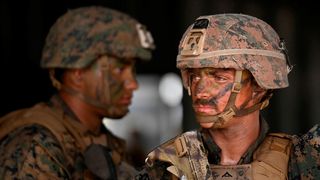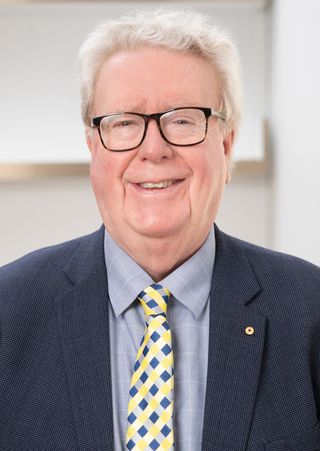The recent AUSMIN talks in Washington DC, which included US Secretary of State Antony Blinken, Defence Secretary Lloyd J. Austin III and their Australian counterparts, Foreign Minister Senator Penny Wong and Deputy PM and Defence Minister Richard Marles appear to have been highly productive and reflective of a close cooperation between allies.
If there were harsh words, then they were kept private.
It has not always been so.
Former Deputy PM and Defence Minister Kim Beazley tells a story about himself, meeting US Defence Secretary in the Reagan Administration, Caspar W. Weinberger in The Presidio in San Francisco in the 1980s.
The allies were close, but this did not stop an argument breaking out between the principals.
Voices were raised until the argument became cacophonous.
Running for President against incumbent Republican Vice President, Richard M. Nixon, Kennedy focused on the alleged “missile gap”, holding the Eisenhower Administration at fault for permitting this weakness in American security to develop on its watch.
In the middle of this unseemly exchange, a US military aide knocked on the door, opened it and said: “Mr Secretary, do you realise that the entire building can hear what you are saying?”
Somewhat sheepishly, both the Americans and the Australians retreated to their corners and the issue was resolved.
The First Cold War pitted the United States and its allies against the Soviet Union and its Empire.
The core issue in the late 1950s became the suggestion of a missile gap which existed as a consequence of supposed Soviet nuclear superiority.
Much of this arose because the boastful Soviet dictator, Nikita Khrushchev, claimed that the USSR turned out nuclear missiles like sausages.
This was an idle claim.
Enter Senator John F. Kennedy.
Running for President against incumbent Republican Vice President, Richard M. Nixon, Kennedy focused on the alleged “missile gap”, holding the Eisenhower Administration at fault for permitting this weakness in American security to develop on its watch.
The “missile gap” was actually a myth; the Americans had an overwhelming preponderance with its nuclear arsenal.
But Kennedy was a hawk on defence policy, and he exploited this straight into the White House.
If we fast forward to 2022, the capability gap is an eerie echo of the “missile gap” of the First Cold War.
The Second Cold War recognises that there is an immediate and existential challenge from the dictatorships aimed at humbling the West.
The war in Ukraine is part of this.
Beijing’s aggression in many parts of the Indo-Pacific constitutes a regional, if not global, manifestation.
This is the background to the assurance given by the American Defence Secretary Lloyd J. Austin III to the effect that the US will not permit a “capability gap” to develop in the Australian defence posture.
Of course, this relates overwhelmingly to the retirement of the Collins Class submarines prior to the arrival of the Anglo/US boats with nuclear propulsion capabilities.
This is very reassuring for Australian strategic perspectives.
Also reassuring is the obvious determination of the allies to include Japan in future defence cooperation and exercises.
This is a formidable addition to our collective strength.
Former US Defence Secretary in the Trump Administration, General James Mattis, described American allies as “force multipliers”.
We are, and collaborative exercises involving Australia, Japan and the US simply reinforce this point.
This explains why Chinese officials are now complaining about the possible emergence of a NATO-style alliance in the Indo-Pacific.
AUSMIN has made it abundantly clear that the United States military will be a greater presence in Australia in the future: in the air, on the land and on sea.
This ignores the fact that NATO now talks in terms of global security employing the term “NATO Plus”.
“NATO Plus” usually involves Australia, Japan, New Zealand and South Korea in security cooperation.
The Five Eyes – Australia, Canada, New Zealand, UK and the US – constitutes a serious element in this global partnership.
AUSMIN has made it abundantly clear that the United States military will be a greater presence in Australia in the future: in the air, on the land and on sea.
Our military infrastructure will be strengthened, and the pace of technological change will accelerate.
The B-52s are now openly transiting through RAAF Tindall.
It may well be, in the years ahead, that the B-21 Raider will also arrive.
There are strong arguments in favour of Australia acquiring a squadron of B-21s, but budgetary pressures now loom.
Certainly, the submarines will place a significant extra burden on Defence spending.
But the strategic pressures are existential, and the long-range B-21 stealth bomber may be part of the answer in eliminating the capability gap.
AUSMIN sent a clear and unmistakable signal to friends and partners of continuing joint Australian and US resolve to safeguard sovereignty and maintain a free and open Indo-Pacific.
It is to be hoped that this signal is also read unambiguously by the dictators.






